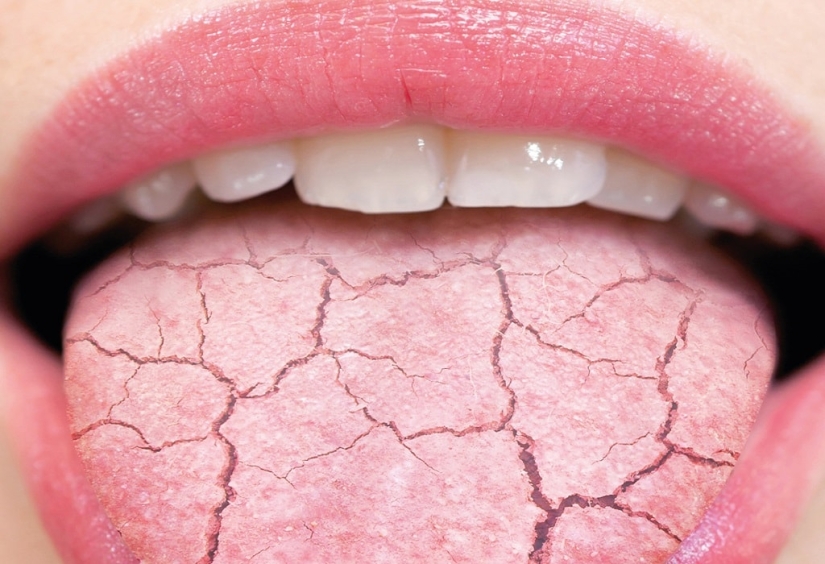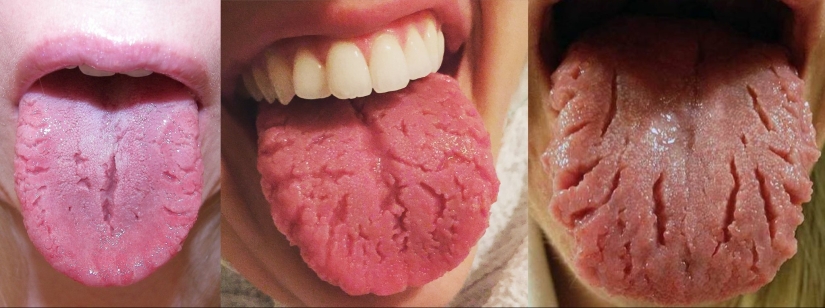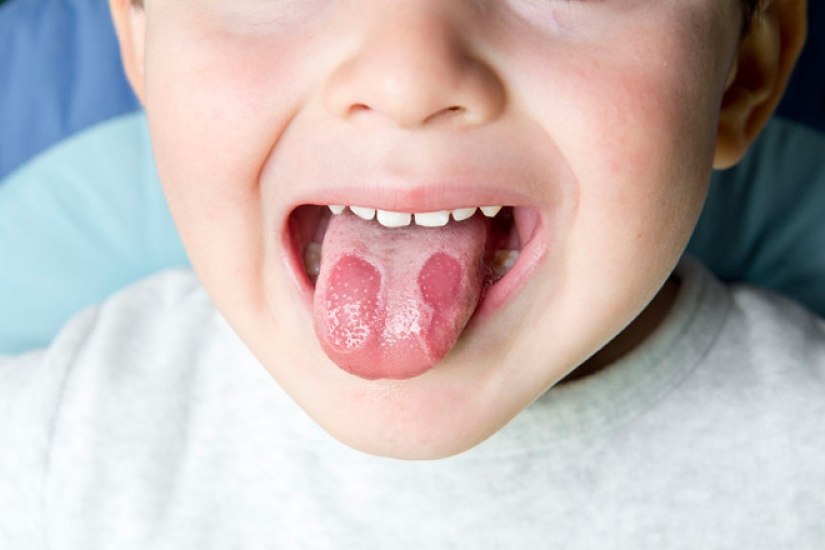Where are the cracks on the tongue from and how dangerous is it?
Categories: Health and Medicine
By Pictolic https://pictolic.com/article/where-are-the-cracks-on-the-tongue-from-and-how-dangerous-is-it.htmlIf you decide to carefully examine your tongue in front of a mirror, you will see that its surface is not uniform. In some places it is almost smooth, and in others it is more prominent. Some will see cracks in their language, which can be either single or cover a significant part of the language. Is it worth worrying about this and does such a strange "relief" speak of some kind of disease?

According to the materials published by the American Academy of Oral Medicine (there is, it turns out, such an authoritative institution), a tongue with cracks is called "folded". Most often, cracks are located on the middle third of the upper, dorsal, surface of the organ. They can affect only the surface of the tongue or be quite deep.

Very often, one large crack diverges into smaller ones, resembling a large river and its tributaries. Scientists from the USA claim that 5% of the world's population got a folded language, although many are ready to dispute this figure. Notorious British scientists claim that cracks are characteristic of as many as 20% of the world's inhabitants. Who is right and who is wrong is not for us to judge.
Interestingly, modern medical science, already well aware of how to transplant a person's head, does not have an exact answer to the question of where these cracks in the tongue come from and why some have them and others do not. Perhaps this is a trace of some kind of genetic mutation? It has been noticed that with age, the folds can become deeper and spread over a large area of the tongue, but science has not been able to obtain a single confirmation that this is somehow related to diseases.

The only inconvenience that a folded tongue can bring to its owner is an unpleasant smell from the mouth (halitosis) if he does not pay enough attention to the hygiene of the tongue when brushing his teeth. Food particles can get stuck in deep cracks on the surface of the organ, as well as between the teeth, and disrupt the freshness of breathing. Cleaning the tongue with a special brush or scraper twice a day solves this problem.
But another feature of the language, which experts call a benign migrating glossitis, and is popularly called a "geographical language", requires attention. Although it is similar to cracking, it can already signal health disorders. With glossitis, the upper and lateral parts of the tongue are covered with red spots, limited by a white border. There are no papillae on them that protect the tongue from negative external factors.

"Geographical language" has 1.5-2% of people and in most cases, this condition does not pose a threat. But still there is a very small chance that the tongue is covered with spots for a reason. In some cases, doctors associate spots on the tongue with diabetes and some other diseases of the endocrine system, stomach and liver. So it is better to consult a specialist, especially if the language has become "geographical" unexpectedly, and before that it was ordinary.
But there is no reason to panic either in the first or in the second case — modern medicine does not know cases when a folded or "geographical" language itself was a problem or led to serious malfunctions in the body.
Recent articles

To modern people, freak circuses and “human zoos” seem terrible and disgusting. But there was a time when they were the only ...

Perm photographer Sergey Boltenkov witnessed dramatic scenes in the village of Warm mountain. Local authority — the red cat, the ...

Modern people perceive "freak shows" and human zoos as medieval savagery. However, the ban on such shows was introduced ...